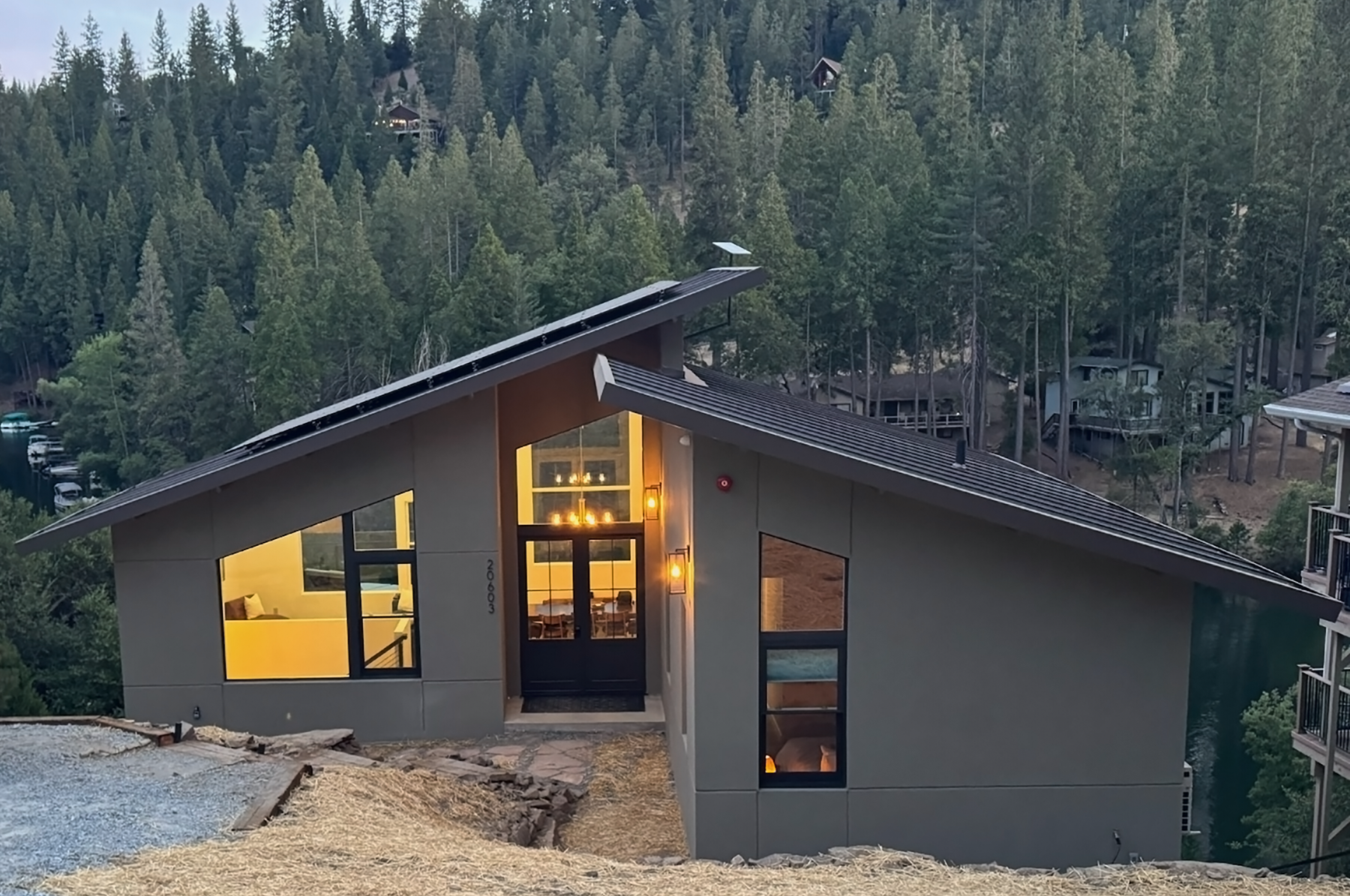 PHNX Development
PHNX Development As the Los Angeles region works to rebuild in the aftermath of the January wildfires that killed at least 29 and destroyed 16,000 structures, a new campaign involving advocates of noncombustible construction materials is asking what might seem an obvious question: Why not build homes out of materials that don’t burn?
That is the idea raised by Building With Resilience, a campaign led by three trade associations: the California Nevada Cement Association, the National Ready Mixed Concrete Association, and the California Construction and Industrial Materials Association.
Further reading:
- Artificial intelligence detects fires early, protecting people and infrastructure
- New computationally efficient model will ‘tame’ fire
- Yes, fire tornadoes are real, and engineers must deal with them
“California is at a turning point where we can and must build better than before,” noted Tom Tietz, the executive director of CNCA, in a May 12 press release announcing the launch of the Building With Resilience effort.
In an interview with Civil Engineering, Tietz explained: “What we’ve seen is history repeating itself in California where we’ve been building structures with combustible materials while at the same time our wildfires have been becoming more intense, more frequent. … The trouble today is that there’s a lack of understanding, an unfamiliarity with what is possible in terms of doing things differently.”
What the Building With Resilience campaign is trying to do, Tietz explained, “is shine a light on how we can build back in a way which is more sustainable and resilient by using noncombustible building materials” such as cement and concrete rather than timber.
Combating inertia and tradition
The idea of constructing concrete homes faces some key obstacles, primarily “cost and tradition,” according to Evangelia Ieronymaki, Ph.D., P.E., M.ASCE, the program director and senior lecturer in construction administration in Columbia University’s School of Professional Studies. In “Concrete vs. Timber: Rethinking Our Homes in the Face of Wildfires,” a Feb. 10 article on the school’s website, Ieronymaki wrote: “Wood has been the dominant material (for building homes) for over a century, and the infrastructure is already in place to support it. Concrete construction requires different skills, more labor-intensive work, and specialized materials, making it more expensive upfront.”
Inertia is another explanation for the reluctance by developers and homebuilders to switch to concrete construction, says Evan Reis, S.E., the executive director and co-founder of the U.S. Resiliency Council, a nonprofit organization dedicated to improving community resilience in the built environment. “If you learn to do something a certain way,” such as building with timber, “that’s the default,” Reis explains.
Many developers and contractors have little experience with building homes out of concrete, Reis adds, while building departments and other local government officials “are used to reviewing a certain type of structure for a certain occupancy type,” such as timber for residential construction. So, to switch to concrete would mean those officials “have to learn the specifics of another type of material,” Reis notes. Inertia is also a greater factor than cost in preventing the adoption of new materials, Reis says, arguing that building more resiliently generally adds 2% or less to the overall costs of construction.
The U.S. Resiliency Council is not part of the Building With Resilience campaign, Reis adds, and does not promote the use of any particular building materials. At the same time, “we recognize that some materials perform better against certain natural hazards than others.”
Making safer choices
For Ieronymaki, “the U.S. reliance on timber construction is becoming increasingly dangerous” as climate change fuels record-breaking wildfires. “While modern fire treatments can improve wood’s resistance, the reality is that wood burns,” Ieronymaki noted in her Columbia article. Thus, a “timber-framed home stands little chance against a fast-moving wildfire, as we’ve seen in the recent fires in California. Concrete, on the other hand, is naturally fire-resistant and can withstand extreme temperatures far better than wood.”
Tietz believes the transition from timber to concrete can benefit from the fact that “you already have concrete contractors on-site for any type of home being built – for the foundations, driveways, hardscaping.” So, this transition just means “looking at the rest of the construction and asking: ‘How can we build the walls, the roof out of these noncombustible materials?’”
Although the campaign is focused on constructing homes with cement and concrete – because housing was the most prevalent type of building destroyed in the recent fires – “all kinds of buildings were also lost in those firestorms,” including schools, churches, banks, commercial properties, and more, Tietz says. So, “this is an important topic for all types of buildings.”
Building on the benefits
The Building With Resilience campaign will likely require a long-term effort to build awareness of the benefits of concrete-framed homes among local government agencies, insurers, architects, engineers, developers, homebuilders, and even homeowners, Tietz recognizes. Fortunately, the challenges of constructing more resilient homes are not technical, Reis stresses. Instead, “the biggest challenge is getting people to change!”
Tietz points to several firms in California that are working toward such change, designing and constructing “noncombustible” single-family homes, including PHNX Development, JTD Architects, and NileBuilt.
 JTD Architects
JTD Architects It will probably take a long-term effort to build awareness of the benefits that concrete-framed homes can provide.
On the legislative side, the campaign has also developed a model ordinance that would enhance state and local building codes to prevent the use of flammable construction materials in home construction and establish two-hour fire-resistance ratings for exterior components of houses.
Such model ordinances can be difficult to adopt and often are added to building codes only after some sort of disaster – such as the changes to California’s seismic codes that followed major earthquakes, Reis says. But once such changes are accepted, they often result in improved performance of structures, Reis adds.
Tragically, the California wildfires represent a similar disaster that can spur action. As Tietz notes: “If we’re not going to see change after what happened, I don’t know when we will.”



